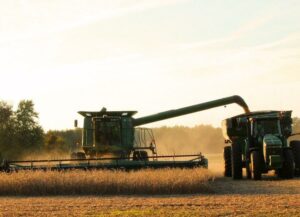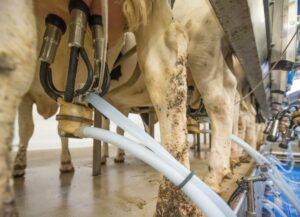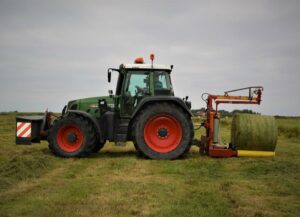Fernando Díaz
The large expansion of the canola crushing industry that occurred in North America in the last decade has increased the supply of canola meal for the animal feed industry. The U.S. Department of Agriculture (USDA) Economic Research Service reported canola meal production in 2017-18 in the U.S. was 1.08 million tons. Similarly, according to the Canadian Oilseed Processors Association, 5.2 million tons of canola were produced in Canada in 2018.
Previous surveys conducted by University of Manitoba and South Dakota State University researchers in samples obtained from Canadian processing facilities reported average protein content in canola meal was 41.7% dry matter (DM; ranged 40.2 – 42.9% DM), rumen undegradable protein (RUP) concentration was 42.7% protein (ranged 32.3-53.8%), and digestible RUP was 74.6% RUP (ranged 71.6-77.4%).
Recently, a meta-analysis performed by investigators from the Université Laval and the Agriculture and Agri-Food Canada, Québec, Canada, evaluated the relationship between inclusion level of canola meal in lactation diets and cow’s production performance. The data set contained 22 studies (74 diets) published in the last 4 decades in which canola meal was blended with other protein sources. The crude protein concentration of canola meal averaged 37.4 ± 3.09% DM, and the average intake of canola meal was 1.2 kg/day.
The researchers (Martineau et al., 2019) reported a positive lineal relationship between canola meal inclusion and production performance. Thus, increasing the proportion of protein from canola meal in the diets, improved intake, milk and energy-corrected-milk yield, milk protein production, milk protein content, and nitrogen efficiency. Response in milk urea nitrogen (MUN) concentration; however, was negatively related to canola meal feeding rate. This may be due to canola meal in these studies replaced other protein sources with more rumen degradable protein content.
In conclusion, greater milk protein yield along with lower MUN concentration observed in this metanalysis suggest that feeding canola meal stimulates nitrogen efficiency. Moreover, the authors did not find a limitation in the inclusion level of canola meal in diets for lactating cows. According to this study, there was no benefit of blending canola meal with other protein sources. These results should be taken carefully because the study did not include an economic analysis. In commercial dairies, feeding diets that include several protein sources is normally the best strategy for covering amino acids requirements in high producing cows.
Reference
R. Martineau, D. R. Ouellet, and H. Lapierre. 2019. Does blending canola meal with other protein sources improve production responses in lactating dairy cows? A multilevel mixed-effects meta-analysis. J. Dairy Sci. 102:5066–5078.
© 2019 Dairy Knowledge Center, LLC. All Rights Reserved.











